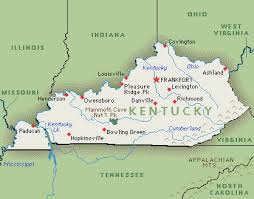Carbongate
By INVESTOR'S BUSINESS DAILY | Posted Friday, June 26, 2009 4:20 PM PT
Climate Change: A suppressed EPA study says old U.N. data ignore the decline in global temperatures and other inconvenient truths. Was the report kept under wraps to influence the vote on the cap-and-trade bill?
Read More: Global Warming
This was supposed to be the most transparent administration ever. Yet as the House of Representatives prepared to vote on the Waxman-Markey bill, the largest tax increase in U.S. history on 100% of Americans, an attempt was made to suppress a study shredding supporters' arguments.
On Friday, the day of the vote, the Competitive Enterprise Institute said it was releasing "an internal study on climate science which was suppressed by the Environmental Protection Agency."
In the release, the institute's Richard Morrison said "internal EPA e-mail messages, released by CEI earlier in the week, indicate that the report was kept under wraps and its author silenced because of pressure to support the administration's agenda of regulating carbon dioxide."
Reading the report, available on the CEI Web site, we find this "endangerment analysis" contains such interesting items as: "Given the downward trend in temperatures since 1998 (which some think will continue until at least 2030), there is no particular reason to rush into decisions based on a scientific hypothesis that does not appear to explain most of the available data."
What the report says is that the EPA, by adopting the United Nations' 2007 "Fourth Assessment" report, is relying on outdated research by its Intergovernmental Panel on Climate Change (IPCC). The research, it says, is "at best three years out of date in a rapidly changing field" and ignores the latest scientific findings.
Besides noting the decline in temperatures as CO2 levels have increased, the draft report says the "consensus" on storm frequency and intensity is now "much more neutral."
Then there's one of Al Gore's grim fairy tales — the melting of the Greenland ice sheet and glaciers the size of Tennessee roaming the North Atlantic. "The idea that warming temperatures will cause Greenland to rapidly shed its ice has been greatly diminished by new results indicating little evidence for operations of such processes," the report says.
Little evidence? Outdated U.N. research? No reason to rush? This is not what the Obama administration and House Speaker Nancy Pelosi were telling us when they were rushing to force a Friday vote on Waxman-Markey. We were given the impression that unless we passed this cap-and-tax fiasco, polar bears would be extinct by the Fourth of July.
We have noted frequently the significance of solar activity on earth's climate and history. This EPA draft report not only confirms our reporting but the brazen incompetence of those "experts" that have been prophesying planetary apocalypse.
"A new 2009 paper by Scafetta and West," the report says, "suggests that the IPCC used faulty solar data in dismissing the direct effect of solar variability on global temperatures. Their report suggests that solar variability could account for up to 68% of the increase in Earth's global temperatures."
The report was the product of Alan Carlin, senior operations research analyst at the EPA's National Center for Environmental Economics (NCEE). He's been with the EPA for 38 years but now has been taken off all climate-related work. He is convinced that actual climate observations do not match climate change theories and that only the politics, not the science, has been settled.
Thomas Fuller, environmental policy blogger with the San Francisco Examiner, wrote Thursday in a story developed in conjunction with Anthony Watts' Web site wattsupwiththat.com: "A source inside the Environmental Protection Agency confirmed many of the claims made by analyst Alan Carlin, the economist/physicist who yesterday went public with accusations that science was being ignored in evaluating the danger of CO2."
All this is particularly interesting because of the charges by Al Gore, NASA's James Hansen and others that the Bush administration and energy companies actively suppressed the truth about climate change.
One of the e-mails unearthed by CEI was dated March 12, from Al McGartland, office director at NCEE, forbidding Carlin from speaking to anyone outside NCEE on endangerment issues such as those in his suppressed report.
Read the rest of
the story here...........






















 "Chasing CCS is a money burner and an energy hog, and it may not deliver much carbon savings. The whole reactive proposition raises
"Chasing CCS is a money burner and an energy hog, and it may not deliver much carbon savings. The whole reactive proposition raises 

